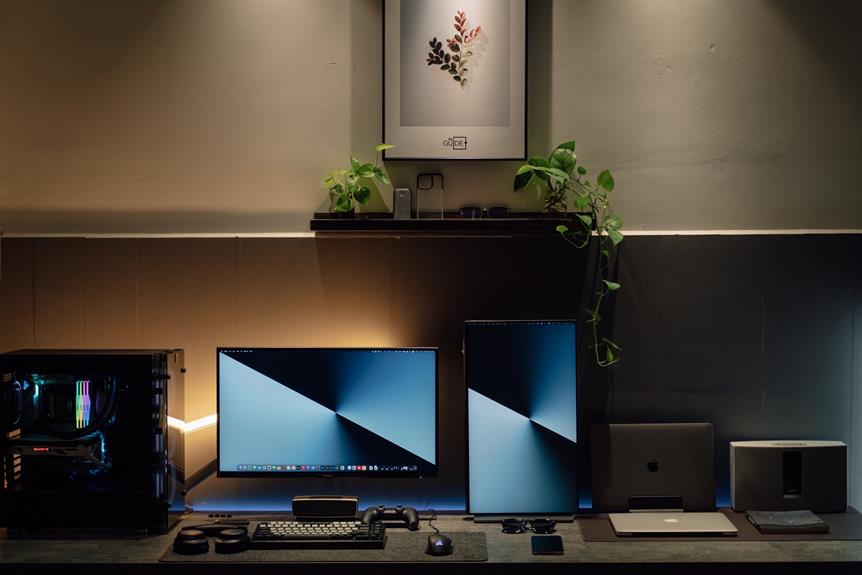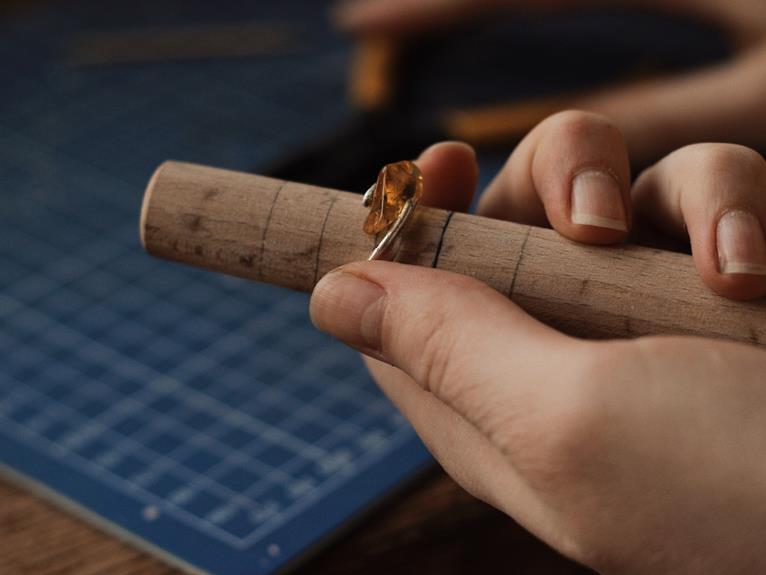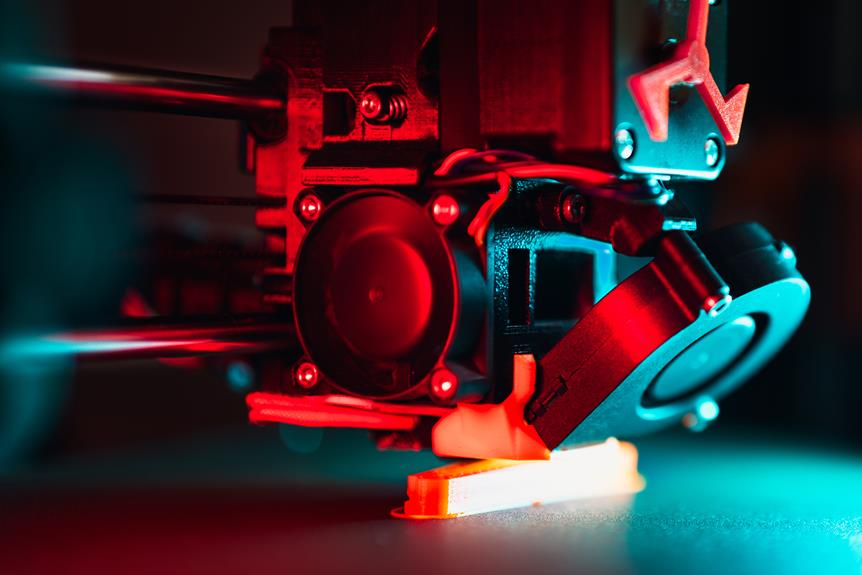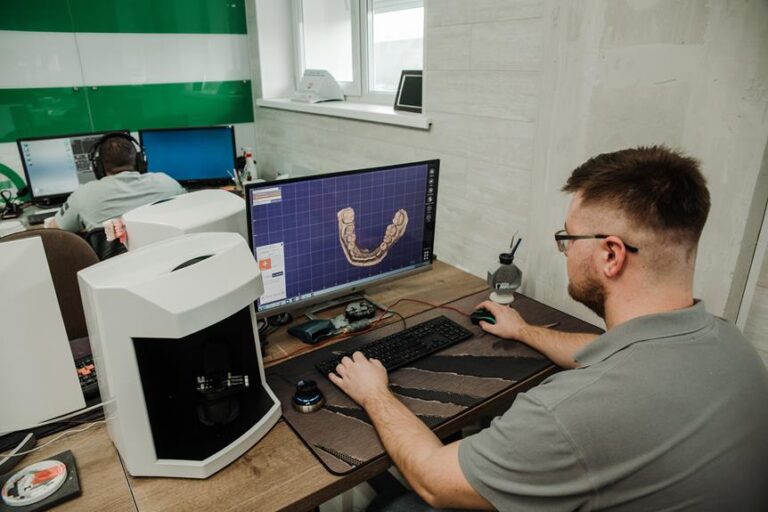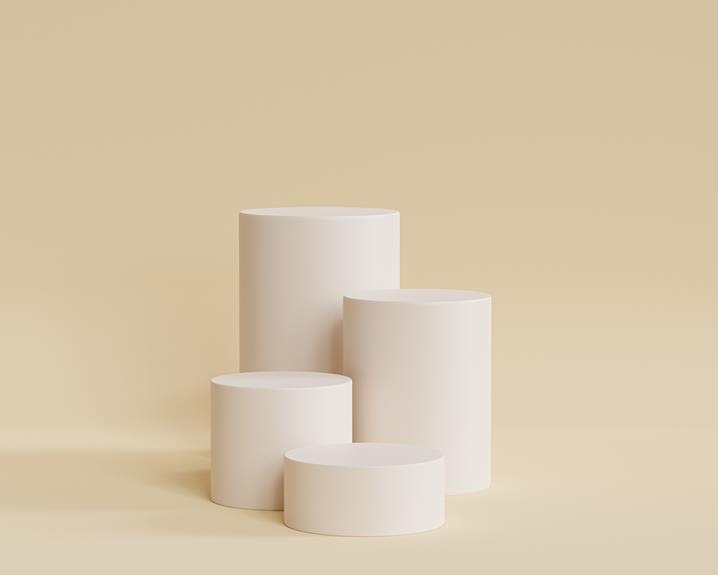PLA Filament: Your Guide to Finding the Perfect 3D Printing Material
Discover the ultimate resource for navigating the world of 3D printing with PLA filament.
In this comprehensive guide, we will delve into the intricacies of PLA filament, explore its benefits for 3D printing, and provide invaluable tips and tricks for achieving high-quality prints.
Whether you are a seasoned professional or a beginner in the field, this article will empower you to choose the perfect PLA filament for your projects and troubleshoot any common issues that may arise along the way.
Key Takeaways
- PLA filament is biodegradable and derived from renewable resources, making it an eco-friendly alternative to ABS.
- PLA filament has a low printing temperature and minimal warping, making it easier to work with.
- PLA filament comes in a wide range of colors and finishes, allowing for greater creativity and impressive visual aesthetics.
- PLA filament can be reinforced with additives like carbon fiber or metal for increased strength and durability, or infused with unique materials like wood or marble for aesthetic purposes.
Understanding PLA Filament: A Comprehensive Overview
This comprehensive overview provides a detailed understanding of the properties, characteristics, and applications of PLA filament in 3D printing.
PLA filament, also known as Polylactic Acid filament, is a popular choice among 3D printing enthusiasts due to its numerous advantages. PLA filament is a biodegradable thermoplastic derived from renewable resources, making it an environmentally friendly option. It is derived from corn starch or sugarcane and is considered a sustainable alternative to traditional petroleum-based plastics.
PLA filament boasts several desirable properties for 3D printing applications. It is known for its low melting point, which allows for easy extrusion and smooth printing. Additionally, PLA filament has a high level of detail and precision, resulting in excellent print quality. This material is available in a wide range of colors and finishes, providing versatility for various applications. PLA filament is also non-toxic and odorless, making it suitable for use in enclosed spaces.
Aside from its properties, PLA filament finds extensive applications in 3D printing. It is commonly used for prototyping, model making, and creating intricate designs. PLA filament is compatible with most FDM (Fused Deposition Modeling) printers, making it accessible to a wide range of users.
Understanding the properties and applications of PLA filament sets the foundation for exploring its benefits in 3D printing.
Benefits of PLA Filament for 3D Printing
PLA filament offers several benefits for 3D printing.
Firstly, it is an eco-friendly alternative to ABS, as it is derived from renewable resources such as cornstarch or sugarcane.
Secondly, PLA is easy to print with, as it has a low printing temperature and minimal warping.
Lastly, PLA filament comes in a wide range of colors, allowing for greater creativity and customization in 3D printing projects.
Eco-Friendly Alternative to ABS
A viable alternative to ABS, PLA filament offers numerous advantages for 3D printing enthusiasts. PLA, or polylactic acid, is a biodegradable and eco-friendly material that is derived from renewable resources such as cornstarch or sugarcane.
Here are some benefits of using PLA filament for your 3D printing needs:
- PLA prints have a lower melting temperature compared to ABS, making it easier to work with and reducing the risk of warping.
- PLA is odorless and emits minimal fumes during the printing process, making it a safer option for indoor use.
- PLA prints have a glossy and smooth finish, resulting in impressive visual aesthetics.
- PLA is biodegradable, meaning that it can break down naturally over time, reducing environmental impact.
With these advantages, PLA filament provides a sustainable and liberated option for 3D printing enthusiasts.
Easy to Print
An advantage of PLA filament for 3D printing is that it is both easy to print and provides high-quality results.
PLA, or Polylactic Acid, is a thermoplastic polymer derived from renewable resources such as corn starch or sugarcane. Its low melting point and minimal warping make it an ideal material for beginners and experienced users alike.
PLA filament requires lower printing temperatures compared to other materials, reducing the risk of nozzle clogging or other printing issues. Its smooth flow and excellent layer adhesion ensure precise and detailed prints.
Additionally, PLA filament is widely available in various colors and finishes, allowing for endless creative possibilities. Its ease of use and reliable performance make PLA filament a popular choice for 3D printing projects of all kinds.
Wide Range of Colors
How does the wide range of colors contribute to the benefits of PLA filament for 3D printing?
- Creativity unleashed: The vast array of colors available in PLA filament allows for endless creative possibilities. Users can bring their ideas to life in vivid, eye-catching hues, making their prints stand out.
- Customization: With PLA filament, users can create personalized and unique prints. They can choose colors that reflect their personality, match their branding or fit a specific purpose.
- Aesthetics: PLA filament offers a smooth and glossy finish, enhancing the visual appeal of the prints. The vibrant colors add a touch of vibrancy and liveliness to the final product.
- Education and engagement: The availability of different colors in PLA filament makes 3D printing more engaging and educational, especially for students. It allows them to explore the world of colors and experiment with their designs, fostering creativity and learning.
The wide range of colors in PLA filament not only adds visual appeal to 3D prints but also provides a platform for self-expression and exploration.
Choosing the Right PLA Filament for Your Project
When it comes to choosing the right PLA filament for your project, it is important to consider the material properties comparison. Different PLA filaments have varying characteristics such as strength, flexibility, and temperature resistance, which can greatly impact the success of your 3D printing project.
Additionally, it is crucial to select a filament that is specifically tailored to meet the requirements of your project, whether it is for functional prototypes, artistic creations, or educational purposes.
Material Properties Comparison
The tensile strength of different PLA filaments varies significantly, making it crucial to consider this property when selecting the most suitable filament for your 3D printing project. Tensile strength refers to the maximum amount of force a material can withstand before breaking or deforming.
Here are some key points to consider when comparing the material properties of PLA filaments:
- Strength: PLA filaments with higher tensile strength are more durable and resistant to breaking, ensuring the longevity of your printed objects.
- Flexibility: Some PLA filaments offer enhanced flexibility, allowing for more versatility in applications where the printed object needs to bend or flex.
- Temperature resistance: PLA filaments with higher temperature resistance can withstand higher heat without deforming, making them suitable for functional parts or objects exposed to heat.
- Printability: Consider the ease of printing and compatibility of the PLA filament with your 3D printer to ensure a smooth printing experience and optimal results.
Project-Specific Filament Selection
To ensure optimal results, carefully consider the specific requirements of your project and select the appropriate PLA filament accordingly. Each project may have different demands in terms of strength, flexibility, and aesthetics.
For projects that require high strength and durability, consider using PLA filaments reinforced with additives like carbon fiber or metal. These filaments offer enhanced mechanical properties and are suitable for functional parts.
If your project requires flexibility, look for PLA filaments with a higher percentage of elastomers, which can provide better elasticity and impact resistance.
For projects that prioritize aesthetics, PLA filaments with unique finishes, such as wood or marble, can add a distinct look to your 3D prints.
It is essential to understand your project's specific needs and select the PLA filament that best meets those requirements for successful 3D printing.
PLA Filament Compatibility: Which 3D Printers Can Use It
While there are various types of 3D printers available in the market, it is important to understand which ones are compatible with PLA filament. PLA (Polylactic Acid) is one of the most popular materials used in 3D printing due to its ease of use, low cost, and environmental friendliness.
When selecting a 3D printer for PLA filament, consider the following:
- Open-source 3D printers: These printers are compatible with PLA filament and offer the freedom to modify and customize the printer to suit your needs.
- FDM (Fused Deposition Modeling) printers: These printers work by melting the PLA filament and extruding it layer by layer to create the desired object.
- Printers with a heated bed: PLA filament tends to warp if not printed on a heated bed. Therefore, printers with a heated bed are recommended for better adhesion and preventing warping issues.
- Printers with a direct drive extruder: PLA filament works best with direct drive extruders, as they provide precise control and better filament handling.
By considering these factors, you can ensure that your 3D printer is compatible with PLA filament, allowing you to achieve high-quality prints with ease.
Tips and Tricks for Successful Printing With PLA Filament
For successful printing with PLA filament, it is important to follow these tips and tricks to ensure optimal results.
First and foremost, it is crucial to properly prepare the printing surface. PLA has a tendency to adhere well to surfaces such as glass or BuildTak, but applying a thin layer of glue stick or hairspray can further enhance adhesion. Additionally, ensuring that the print bed is level and at the correct temperature is vital. PLA typically requires a bed temperature of around 60-70°C.
Next, it is important to calibrate the extruder properly. PLA filament has a relatively low melting point, typically around 180-220°C. It is essential to ensure that the extruder temperature is set accurately to achieve the desired print quality. Furthermore, adjusting the flow rate or extrusion multiplier can help fine-tune the print and prevent issues such as over-extrusion or under-extrusion.
Another tip is to use a cooling fan while printing with PLA filament. PLA cools and solidifies quickly, so having a cooling fan blowing on the print can minimize warping and improve overall print quality.
Lastly, it is crucial to store PLA filament properly. PLA is sensitive to moisture, so it is recommended to store it in a dry and airtight container to prevent any moisture absorption.
Following these tips and tricks will help ensure successful printing with PLA filament and produce high-quality 3D prints.
Achieving High-Quality Prints With PLA Filament: Best Practices
To achieve high-quality prints with PLA filament, it is essential to implement best practices throughout the printing process. Here are some tips to help you achieve the best results:
- Calibrate Your Printer: Ensuring that your printer is properly calibrated is crucial. This includes adjusting the bed level, nozzle height, and extruder temperature to optimize print quality.
- Choose the Right Settings: Experiment with different settings such as layer height, print speed, and infill density to find the optimal combination that suits your desired print quality.
- Use High-Quality PLA Filament: Selecting a reputable brand of PLA filament can make a significant difference in print quality. Look for filaments that have consistent diameter, good dimensional accuracy, and are free from impurities.
- Optimize Cooling: PLA filament requires proper cooling during the printing process to prevent warping and improve overall print quality. Ensure that your printer's cooling system is functioning optimally.
By following these best practices, you can achieve high-quality prints with PLA filament.
In the next section, we will explore the wide range of PLA filament varieties and specialty blends available in the market.
Exploring PLA Filament Varieties and Specialty Blends
In the next section, we will delve into the diverse range of PLA filament varieties and specialty blends that are available in the market.
PLA, or Polylactic Acid, is a popular choice for 3D printing due to its ease of use, biodegradability, and low toxicity. However, there are several variations of PLA filament that offer unique properties and characteristics.
One variety of PLA filament is the conductive PLA, which contains additives that allow for electrical conductivity. This filament is commonly used in the production of electronic components and circuit boards.
Another variety is the glow-in-the-dark PLA, which contains phosphorescent pigments that absorb and emit light, making printed objects visible in the dark.
Specialty blends of PLA filament combine PLA with other materials to enhance specific properties. For example, PLA composites with wood fibers create a filament that mimics the appearance and texture of wood. This blend is often used in furniture design and architectural modeling.
On the other hand, PLA reinforced with carbon fiber offers increased strength and rigidity, making it suitable for engineering applications.
Other specialty blends include PLA filaments infused with metallic or ceramic particles, which result in printed objects with a metallic or ceramic-like finish. These blends are valued for their aesthetic appeal and are commonly used in art and jewelry production.
Troubleshooting Common Issues With PLA Filament Printing
With proper troubleshooting techniques and a thorough understanding of common issues, you can ensure a smooth and successful PLA filament printing experience. Here are some common issues you may encounter and how to troubleshoot them:
- Clogging: PLA filament can sometimes clog the nozzle due to excessive heat or low-quality filament. To solve this issue, try cleaning the nozzle or adjusting the temperature settings.
- Stringing: Stringing occurs when the printer leaves thin strands of filament between printed objects. To reduce stringing, check the retraction settings in your slicer software and adjust the temperature and print speed accordingly.
- Warping: Warping happens when the corners of your printed object lift up from the build plate. To prevent warping, ensure that the build plate is level and clean, and consider using a heated build plate or adhesive like a glue stick.
- Layer adhesion: Poor layer adhesion can result in weak and brittle prints. To improve layer adhesion, increase the print bed temperature, adjust the print speed, and ensure proper cooling between layers.
Frequently Asked Questions
Can PLA Filament Be Used for Outdoor Applications?
PLA filament is commonly used for indoor applications due to its lower resistance to heat and UV degradation. However, for outdoor use, it may not withstand prolonged exposure to sunlight and extreme temperatures, making alternative materials like PETG or ABS more suitable.
Is PLA Filament Safe for Food Contact?
PLA filament is not recommended for direct food contact due to its porous nature, which can harbor bacteria and contaminants. However, if PLA items are used for indirect food contact or lined with a food-safe material, they can be considered safe.
How Long Does PLA Filament Last Before It Degrades?
PLA filament degradation depends on various factors such as storage conditions, exposure to heat, and moisture. On average, PLA filament can last for several years before it starts to degrade, making it a durable choice for 3D printing applications.
Can PLA Filament Be Mixed With Other Materials for 3D Printing?
Yes, PLA filament can be mixed with other materials for 3D printing. This allows for the creation of composite filaments with enhanced properties such as increased strength or improved heat resistance. However, it is important to carefully consider the compatibility and characteristics of the materials being mixed.
What Is the Maximum Temperature That PLA Filament Can Withstand?
PLA filament, a popular material for 3D printing, has a maximum temperature tolerance of approximately 60-65 degrees Celsius. It is important to stay within this range to ensure optimal performance and prevent deformation or melting of the filament.
Conclusion
In conclusion, PLA filament is a versatile and popular material for 3D printing due to its numerous benefits and compatibility with a wide range of printers.
By following best practices and choosing the right filament for your project, you can achieve high-quality prints.
Interestingly, a study found that PLA filament is biodegradable and can break down in just a few years, highlighting its environmentally friendly nature.
This statistic may evoke a sense of responsibility and encourage the audience to consider PLA filament for their future 3D printing endeavors.

